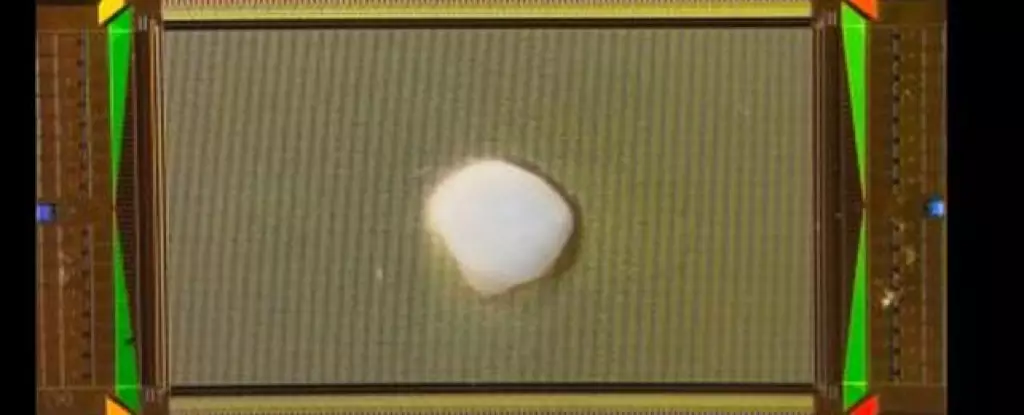The human brain is an awe-inspiring feat of nature, unmatched in its power and intricacy by any computer ever built. With its estimated 86 billion neurons and quadrillions of synapses, the brain processes information at a scale and speed far beyond the capabilities of modern computing technology. One key factor in the brain’s remarkable success is its ability to serve as both a processor and a memory device, unlike most traditional computing systems where these functions are physically separated. While there have been previous attempts to create more brain-like computers, a recent development takes this idea to a whole new level – the integration of real human brain tissue with electronics. This ground-breaking technology, known as Brainoware, has the potential to revolutionize not just computing, but our understanding of the human brain itself.
Led by engineer Feng Guo of Indiana University Bloomington, a team of researchers embarked on a mission to explore the possibilities offered by Brainoware. They fed this innovative system tasks ranging from speech recognition to nonlinear equation prediction and observed its performance. While Brainoware was slightly less accurate than a pure hardware computer powered by artificial intelligence, the study marks a significant milestone in the development of a new kind of computer architecture. However, it is crucial to recognize and address the ethical considerations associated with this cutting-edge technology.
The Importance of Neuroethical Considerations
While Guo and his team adhered to ethics guidelines during the development of Brainoware, researchers from Johns Hopkins University caution that it is crucial to thoroughly evaluate the myriad of neuroethical issues surrounding biocomputing systems that incorporate human neural tissue. Lena Smirnova, Brian Caffo, and Erik C. Johnson, who were not directly involved with the study, emphasize the need to examine ethical considerations as the sophistication of organoid systems increases. These discussions must take place alongside technological advancements in order to ensure responsible and sustainable progress in this field.
Efforts to simulate the brain’s activity in an artificial system have proven to be immensely challenging. Back in 2013, Riken’s K Computer, one of the world’s most powerful supercomputers at the time, attempted to mimic the brain. However, with its 82,944 processors and a petabyte of memory, it took 40 minutes to simulate just one second of the activity of 1.73 billion neurons with 10.4 trillion synapses. This represented only a minute fraction of the brain’s true capacity. Over the years, scientists and engineers have strived to design hardware and algorithms that mirror the brain’s structure and functionality. This field, known as neuromorphic computing, has made significant strides, but energy consumption and training time remain significant challenges.
Guo and his colleagues took a different path in their pursuit of brain-like computing by leveraging real human brain tissue cultivated in a laboratory setting. They managed to coax human pluripotent stem cells into developing into various types of brain cells, ultimately forming three-dimensional mini-brains called organoids. With their interconnected networks and structures, these organoids provide a valuable tool for studying brain development and function without the need for invasive procedures on living individuals. Brainoware, the integration of these brain organoids with an array of high-density microelectrodes, utilizes a type of artificial neural network called reservoir computing. The electrical stimulation transports information into the organoid, where it undergoes processing before the system produces its calculations through neural activity. The input and output layers still rely on conventional computer hardware, but these layers underwent training to function optimally in conjunction with the organoid.
Promising Results and Future Applications
To demonstrate Brainoware’s capabilities, the researchers subjected it to various tests. In one experiment, they provided Brainoware with 240 audio clips of eight male speakers uttering Japanese vowel sounds, tasking it with identifying a specific individual’s voice. Even with limited training, Brainoware achieved a 78 percent accuracy rate. The researchers also tasked Brainoware with predicting a Hénon map, a complex dynamical system characterized by chaotic behavior. After unsupervised learning over four days, Brainoware surpassed the accuracy of an artificial neural network without a long short-term memory unit. While Brainoware fell slightly behind neural networks with long short-term memory units that underwent 50 training epochs, it accomplished comparable results in under 10 percent of the training time. The researchers highlight the adaptability and plasticity of organoids, noting that Brainoware has the potential for adaptive reservoir computing.
Despite these promising results, there are still significant challenges that need to be addressed. One of the critical issues is ensuring the long-term viability and health of the organoids. Additionally, the power consumption levels of the peripheral equipment pose further constraints. However, with a mindful consideration of ethical implications, Brainoware opens up a realm of possibilities not just for computing but also for gaining groundbreaking insights into learning mechanisms, neural development, and the cognitive implications of neurodegenerative diseases. While it may take decades before biocomputing systems become ubiquitous, the research surrounding Brainoware lays the groundwork for future advancements that have the potential to reshape our understanding of the human brain.
Brainoware represents an exciting frontier in the convergence of biology and computing, offering a glimpse into the immense potential of integrating human brain tissue with electronics. However, as we delve further into this realm, it is of utmost importance to navigate the ethical considerations surrounding this technology with care and responsibility. By doing so, we can harness the extraordinary power of the human brain while preserving the principles of respect, autonomy, and integrity.


Leave a Reply